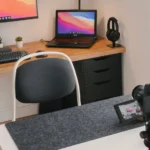Deciding on a new website for your business is easy, but the actual process of executing is where things can get complicated, from hiring the best web development company to choosing the different types of websites you want for your business.
Furthermore, what sacrifices, if any, should you make in terms of customization?
The website design process involves all stakeholders. Optimally, this will help you get a website that’s not only visually appealing but also highly functional. We’ve created this guide to help you learn all about the website design process.
Let’s begin.
Defining the Scope of Your Project
The first step in the website design process is to define the scope of your project. Your web designer will need to know the purpose of your website, who your target audience is, what features you need, and what kind of look and feel you want. The more specific you can be, the better.
For example, if you’re into health and beauty, focus on content and design tips for marketing wellness supplements. This is the kind of information that will help your web designer come up with the perfect website for your business.
Gathering Inspiration & Ideation
Gathering inspiration and ideation is where you look at other websites and design resources to get ideas for your own project. When you have a good idea of of the look of your website, you can start sketching out your layout and designing your pages.
The whole process can take weeks or even months, but the end result will be a stunning website that you can be proud of.
Sketching & Wireframing
The two most important (and often most overlooked) steps that go into designing a website steps are sketching and wireframing.
Sketching allows you to get your ideas down on paper (or digital) and start to visualize the overall look and feel of the site. Wireframing comes next and is basically a more detailed sketch of the site. It includes all of the important elements like navigation, content, and calls to action.
Both sketching and wireframing will help you to create a better, more user-friendly website.
Design & Development
Design is where you actually start putting together the look and feel of the website. This is where you’ll choose colors, fonts, and imagery and begin to put together the various pages of the site.
Development is the next step and is where the website is actually built. This step takes all of the designs and turns them into working code that will power the website.
Testing, Revisions, & Launch
Testing is a crucial part of the design process because it allows you to identify and fix any problems with your website before you launch it. Revisions are also important because they ensure that your website is up to your standards before you put it out there for the world to see.
Launching your website can be exciting and nerve-wracking at the same time, but it’s worth it when you see all your hard work come to fruition. Thanks to the website design process, you can be confident that your website is the best it can be before you share it with the world.
Boost Your Business, Start Your Website Design Process Today!
After reading this article, you should have a good understanding of what the website design process looks like in practice. If you’re ready to get started on your own project, contact a web design agency to get started.
For more great tips on web design, marketing, and more, check out our other blog posts.


